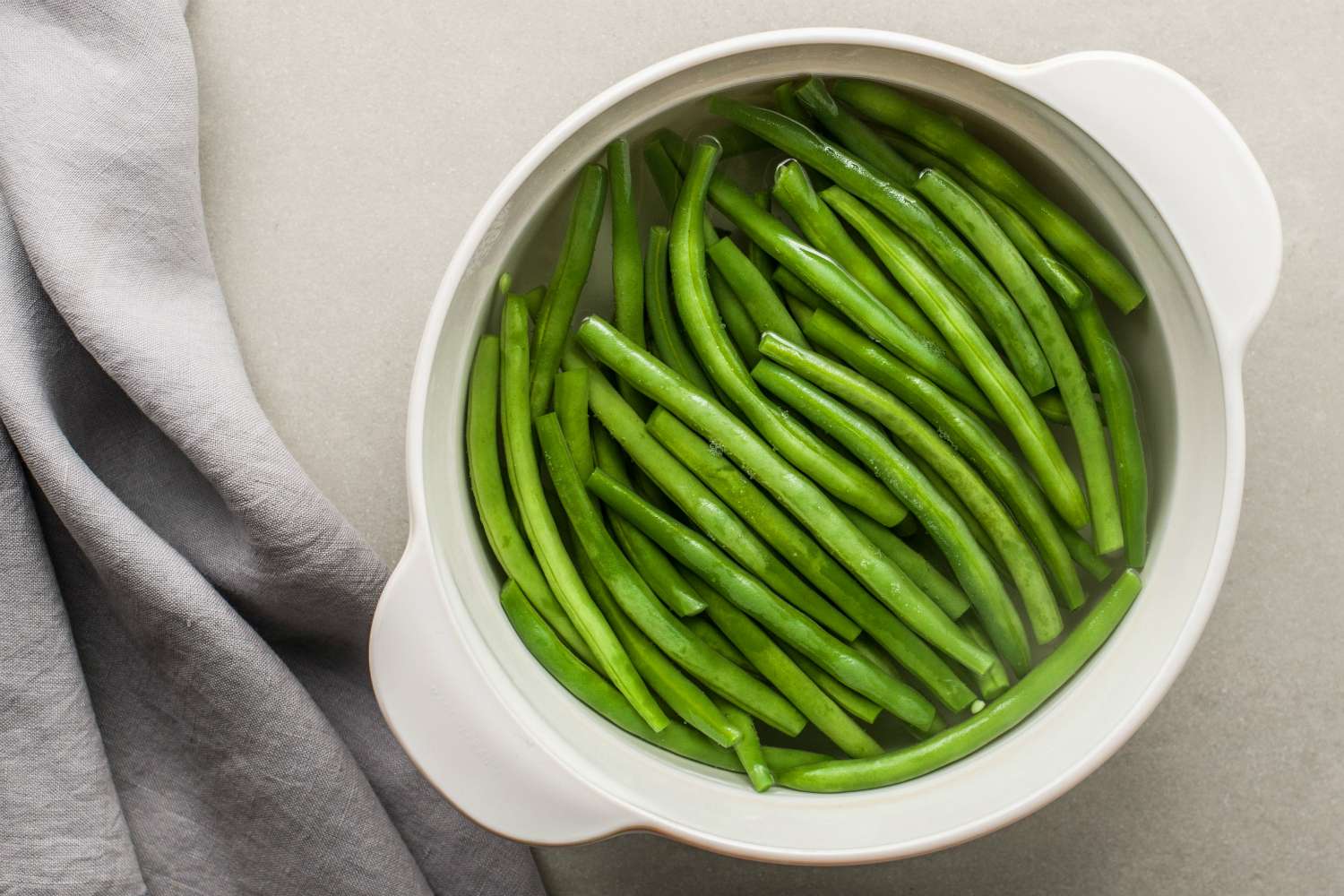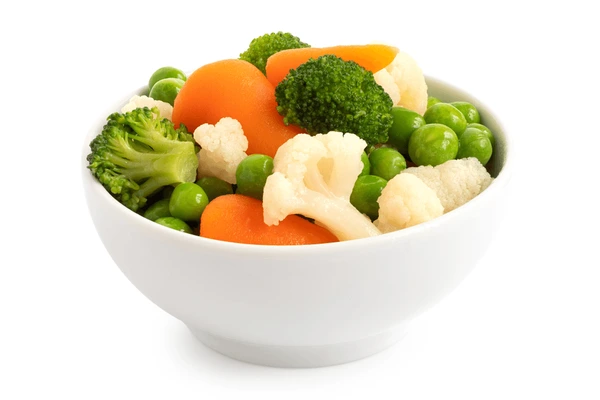
Blanching vegetables is an essential cooking technique that enhances flavor, texture, and nutritional value. This simple process involves briefly cooking vegetables in boiling water and then quickly cooling them in ice water. Not only does blanching preserve the vibrant colors of your vegetables, but it also retains essential nutrients, making your dishes more appealing and healthier.
Mastering how to blanch vegetableseffectively opens up a world of culinary possibilities. From preparing vegetables for freezing to improving the taste and texture of your favorite recipes, this skill can elevate your cooking.
What Is Blanching?
Blanching is a cooking method that involves immersing vegetables in boiling water briefly, followed by plunging them into ice water. This process preserves the vibrant color, texture, and taste of vegetables, making them ideal for a range of dishes. It’s a particularly valuable technique when you use herbs for flavor, as blanching can help retain their freshness and appeal.
Traditionally, blanching has been used to prepare vegetables for preservation, enhancing their quality. With this method, you can ensure vegetables are perfectly cooked and ready for any culinary creation.
Benefits Of Blanching Vegetables
Blanching offers several key benefits:
- Preservation of Color and Texture: Blanching preserves the vibrant color and crisp texture of vegetables, making them visually appealing and flavorful. This technique is especially useful in preparing vegetables for New Jersey dishes, where fresh, colorful ingredients are often featured.
- Nutrient Retention: While prolonged cooking can lead to nutrient loss, blanching preserves vitamins and minerals. The quick cooking method minimizes the time vegetables spend in heat, ensuring they retain their nutritional value.
- Enhanced Flavor: Blanching can bring out the natural flavors of vegetables, making them fresher and more vibrant. This technique, often used in easy dinner recipes, can also help reduce bitterness in vegetables like Brussels sprouts and kale.
- Improved Shelf Life for Freezing: Blanching helps to kill enzymes that can cause spoilage, ensuring that your frozen vegetables maintain their quality, flavor, and texture for longer periods.
The Blanching Process
1. Prepare Your Vegetables
Start by selecting fresh, high-quality vegetables. Wash them thoroughly to remove any dirt. Trim, peel, or cut them as necessary, ensuring uniformity in size for even cooking.
2. Boil The Water
Fill a large pot with water, adding about 1 tablespoon of salt per gallon. Bring the water to a rolling boil, which is essential for proper blanching.
Ice Bath
Prepare a bowl filled with ice and cold water. Once the vegetables are blanched, immediately transfer them to the ice bath to stop the cooking process. Leave them in the ice water for about the same time they were blanched, then drain and pat them dry.
Blanching Time
Once the water is boiling, carefully add your prepared vegetables. Here’s a quick reference guide for blanching times:
| Vegetables | Blanching Time |
| Asparagus (whole) | 2-4 minutes |
| Beans (green or wax) | 3 minutes |
| Broccoli (florets) | 2-3 minutes |
| Brussels Sprouts | 3-5 minutes |
| Carrots (sliced) | 2-3 minutes |
| Cauliflower (florets) | 3 minutes |
| Corn (kernels) | 4-6 minutes |
| Peas | 1-2 minutes |
| Spinach | 2 minutes |
| Zucchini (sliced) | 2 minutes |
| Bell Peppers | 3 minutes |
| Kale | 2-3 minutes |
| Leeks | 2-3 minutes |
| Chard | 2-3 minutes |
Common Mistakes To Avoid When Blanching
To ensure successful blanching, avoid these common pitfalls:
- Insufficient Water: Always use a large pot with plenty of boiling water to prevent the temperature from dropping significantly when you add the vegetables.
- Overcrowding: Blanch vegetables in small batches to maintain water temperature. Overcrowding can lead to uneven cooking.
- Neglecting the Ice Bath: Skipping the ice bathcan lead to overcooked vegetables. Always shock them in ice water to halt the cooking process.
Freezing Blanched Vegetables
Blanching is especially beneficial if you plan to freeze vegetables. After blanching and cooling them in the ice bath, dry the vegetables thoroughly to prevent ice crystals from forming.
- Packaging: Use airtight freezer bags or containers to store the blanched vegetables. Squeeze out as much air as possible to prevent freezer burn.
- Labeling: Don’t forget to label your bags or containers with the date and contents. Most blanched vegetables can be stored in the freezer for up to 12 months.
Tips For Blanching Any Vegetable
- Choose Fresh Vegetables: Start with the freshest vegetables for best results.
- Uniform Size: Cut vegetables into uniform pieces for even blanching.
- Use Plenty of Water: Ensure you have enough boiling water for blanching.
- Salt the Water: Adding salt helps maintain flavor and color.
- Avoid Overcrowding: Blanch in small batches to ensure even cooking.
- Keep an Eye on Time: Use a timer to avoid overcooking.
- Prepare an Ice Bath: Always shock vegetables in ice water to stop cooking.
- Drain Thoroughly: Remove excess moisture before freezing or storing.
FAQs
How Long Should I Blanch Vegetables?
Blanching times vary depending on the type of vegetable. Generally, blanch for 1 to 3 minutes, then immediately cool in an ice bath to stop the cooking process.
Can I Blanch Vegetables Without Salt?
While you can blanch without salt, using it helps to enhance flavor and maintain vibrant colors. Salt is recommended, especially for greens.
Is It Necessary To Shock Vegetables In Ice Water?
Yes, shocking vegetables in ice water is crucial as it halts the cooking process, preserving the texture and color. Skipping this step can lead to overcooked vegetables.
Can I Store Blanched Vegetables In The Refrigerator?
Blanched vegetables can be stored in the refrigerator for a few days. However, for long-term storage, freezing is recommended.
What Vegetables Are Best For Blanching?
Most vegetables can be blanched, but popular choices include green beans, broccoli, carrots, and spinach. Always refer to specific blanching times for each vegetable.
Conclusion
Blanching vegetables is a simple yet effective technique that enhances flavor, color, and nutritional value while extending shelf life. By following the proper steps and avoiding common mistakes, you can master the art of blanching and enjoy vibrant, perfectly cooked vegetables in your meals.
With a little practice, this technique will become a staple in your culinary repertoire, allowing you to elevate your dishes and minimize waste. So grab your favorite vegetables, get boiling, and enjoy the delicious results of your blanching skills!

